Artificial Intelligence (AI) agents are rapidly transforming the creative industries, offering tools
that streamline workflows, inspire innovation, and expand accessibility. By automating
repetitive tasks, enabling complex creative outputs, and democratizing artistic expression, AI
is becoming an indispensable partner for artists, designers, and creators across the globe.
In the visual arts and media production, generative AI has revolutionized workflows. Platforms
like MidJourney and Gendo are enabling architects at firms such as Zaha Hadid Architects
(ZHA) to rapidly produce design options, cutting rendering times by up to 80%. By integrating
generative AI tools like Rhino.ai and Maya AI into mid-stage workflows, ZHA has boosted
productivity by 50%, enabling architects to focus on creative ideation instead of repetitive
tasks. This efficiency not only enhances the creative process but also positions firms to
succeed in highly competitive design competitions.
Video editing and special effects have also been transformed by AI. Tools like Runway offer
advanced capabilities, allowing creators to remove backgrounds, edit videos, and even
generate entirely new footage from text prompts. This enables filmmakers and video
producers to prototype scenes or apply sophisticated visual effects in a fraction of the time
traditional methods require. Similarly, Kling AI specializes in generating cinema-grade videos
from text inputs, complete with advanced 3D mechanisms and physics simulations. This has
made Kling AI a valuable asset for industries such as advertising, social media, and
entertainment, enabling high-quality video content to be created at scale and with
unprecedented efficiency.
AI-driven tools like Synthesia are empowering creators to generate lifelike avatars for video
content. By eliminating the need for extensive filming, Synthesia simplifies the production of
training videos, advertisements, and social media content. This has allowed creators to scale
their output significantly, with some reporting monthly earnings between $20,000 and $60,000
through video generation, affiliate product promotion, and personalized content. Such tools
are redefining the possibilities for individual creators and small teams, allowing them to
compete with larger production houses.
AI-generated personas are also becoming prominent on social media platforms. Meta’s
initiative to introduce AI-generated profiles for Instagram and Facebook demonstrates the
potential for these tools to engage audiences. Each AI persona is equipped with distinct bios
and content creation capabilities, designed to drive user interaction. However, this innovation
raises important questions about authenticity and the potential for misinformation. Ensuring
clear labeling and transparency about AI-generated content is crucial to maintaining user trust
and ethical standards.
In the music industry, AI tools are opening new creative possibilities. Suno, an advanced
platform for AI-driven music composition, enables musicians to create original soundtracks by
blending predefined styles with custom elements. Whether for films, video games, or
commercials, Suno democratizes access to professional-grade music composition, allowing
creators to produce high-quality tracks tailored to their projects. Similarly, AIVA assists
musicians by combining intuitive creativity with AI-powered analysis, creating pieces that
expand the boundaries of traditional music composition. These tools empower musicians to
explore new creative directions while reducing production costs and timelines.
The accessibility of open-source tools has been a game-changer for the creative community.
ComfyUI, an intuitive graphical interface for Stable Diffusion, allows creators to explore and
fine-tune workflows by connecting modular nodes for tasks like image generation, inpainting,
and post-processing. This flexibility enables artists and designers to experiment with styles,
refine outputs, and produce professional-grade content with minimal technical expertise.
LangChain further expands possibilities by providing a framework for integrating large
language models (LLMs) into complex workflows. Developers can combine tools, APIs, and
conversational memory into automated chains, enabling applications such as personalized
marketing campaigns, automated design processes, and even data-driven storytelling. These
tools are democratizing advanced capabilities, making them accessible to a broad range of
creators.
Generative AI tools like Adobe Firefly are also reshaping traditional artistic fields. Designers
can explore styles and compositions that might not have been considered otherwise, while
copywriters use platforms like Jasper to craft compelling ad copy and slogans tailored to
specific audiences. This integration of AI into the creative process ensures that campaigns
resonate deeply with their target demographics, driving engagement and conversions. The
ability to combine data analysis with creative intuition has become a powerful tool in
advertising, ensuring relevance and impact.
AI’s ability to analyze vast datasets is transforming decision-making in the creative industries.
Fashion designers use AI to predict seasonal trends, aligning their collections with consumer
preferences and market demands. Filmmakers rely on AI tools to analyze script performance,
audience sentiment, and box office trends, refining their storytelling to maximize appeal. This
data-driven approach not only enhances creative outcomes but also reduces the risk
associated with large-scale projects.
While the integration of AI into creative industries offers immense potential, it also raises
important questions about the authenticity and originality of AI-generated content. The
proliferation of AI tools calls for ethical guidelines to ensure responsible usage. Clear labeling
of AI-assisted works is essential to maintaining transparency and fostering trust between
creators and audiences. These measures will help ensure that AI serves as a tool to augment
human creativity rather than overshadowing it.
AI agents are poised to become the backbone of the creative industries, enhancing efficiency,
democratizing access to high-quality tools, and fostering innovation. From architecture to
media production, advertising to music composition, platforms like Synthesia, Runway, Kling
AI, Suno, ComfyUI, and LangChain are revolutionizing the way we create. As we enter this new
era of blended technology and artistry, the challenge lies in using AI responsibly to preserve
the unique essence of human creativity while pushing the boundaries of what is possible. The
fusion of human ingenuity and AI-driven innovation is set to redefine the creative industries,
offering opportunities for unprecedented expression and impact.

